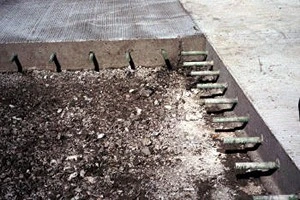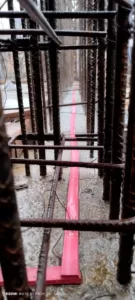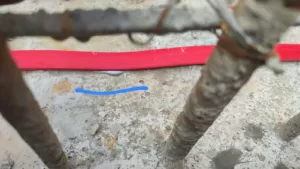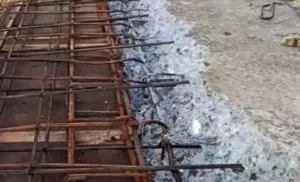

1.Construction Joint Treatment | Waterproofing – importance
RCC or Reinforced Cement Concrete is a popular construction material used in building structures due to its strength and durability. However, to ensure the longevity of the RCC structures, it is important to take measures to protect them from water and moisture, which can lead to corrosion and weakening of the structure.
RCC (Reinforced Cement Concrete) construction joints are the points where two concrete pours meet, creating a joint. Waterproofing of these joints is important to prevent the ingress of water or other substances that could damage the concrete structure over time.
These joints are vulnerable to water seepage, which can cause damage to the structure. Therefore, proper treatment of construction joints is essential to prevent water penetration.
2. available systems for Construction Joint Treatment | Waterproofing
Waterproofing is the process of making a surface impervious to water or resistant to the penetration of water. In the context of RCC, construction Joint treatment / waterproofing refers to the method of preventing the possibility of water penetration these pour joints.
The treatment of construction joints and waterproofing of RCC structures can be done in several ways, depending on the specific requirements of the structure and the environment it is located in. Some common methods include
- water-stopper (Swell bar): Swell bars are a type of hydrophilic waterstop used at construction joints in concrete structures to provide a waterproof seal. Swell bars are made of a synthetic rubber material that expands when it comes into contact with water, effectively sealing the joint and preventing water from penetrating the structure.
- Bonding Agent: Bonding agent like SBR (Styrene-Butadiene Rubber) latex at a construction joint in concrete structures can help to improve the bond strength between the two concrete pours and provide additional waterproofing. SBR latex is a synthetic polymer that is often used as a bonding agent in concrete construction. When applied to a concrete surface, it penetrates into the pores of the concrete and forms a strong bond with the substrate, creating a stable interface between the two concrete pours.
- Sealants: sing sealants at a construction joint is another effective way to provide waterproofing and prevent water infiltration. Sealants are typically applied to the joint after the concrete has cured, and are designed to fill any gaps or voids in the joint, creating a watertight seal.
There are multiple options available to choose from for the treatment of construction joint. Each must be chosen according to the requirement of the project.






3. selection of Construction Joint Treatment | Waterproofing
The selection of a construction joint treatment and waterproofing system depends on various factors such as the type of structure, the level of water exposure, the budget, and the project timeline. Here are some common factors to consider when selecting a construction joint treatment and waterproofing system:
- Type of structure: The type of structure being constructed, such as a bridge, tunnel, or building, will influence the selection of the appropriate construction joint treatment and waterproofing system.
- Water exposure: The level of water exposure the structure will face, such as standing water or frequent exposure to rain, will influence the selection of the appropriate waterproofing system.
- Budget: The available budget for the project will impact the selection of the construction joint treatment and waterproofing system. Some systems may be more expensive than others.
- Project timeline: The timeline for the project will influence the selection of the construction joint treatment and waterproofing system. Some systems require more time for installation and curing than others.
- Ease of installation: The ease of installation of the construction joint treatment and waterproofing system may be a factor to consider, especially for projects with tight timelines.
- Durability: The durability and expected lifespan of the construction joint treatment and waterproofing system are important factors to consider to ensure long-term protection of the structure.
Considering these factors, the most appropriate construction joint treatment and waterproofing system will vary depending on the specific needs of the project. It is recommended to consult with a professional engineer or a waterproofing specialist to determine the most appropriate system for your project.
GEOLIZ WATERPROOFERS PVT. LTD.
Waterproofing Products & Services Guide
For details on other waterproofing products & Services
